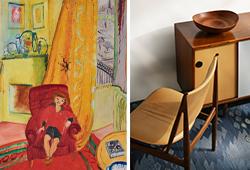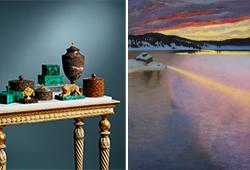123
1558085
Anna Petrus
(Ruotsi, 1886-1949)
Anna Petrus
(Ruotsi, 1886-1949)
a pewter wall sculpture of a lion, Firma Svenskt Tenn, Stockholm probably 1920s-30s.
With mounting for hanging, unmarked. Height 18.5 cm, width 21 cm, depth 4.5 cm.
Alkuperä - Provenienssi
Has been in the same family's possession since it was purchased at Svenskt Tenn many years ago..
Kirjallisuus
Bukowskis Modern Art + Design, auction 598, spring 2017, catalogue no 138, compare the mirror by Uno Åhrén with Anna Petrus' lion sculpture as a crest.
Marie Rehnberg, "Anna Petrus - Skulptör och industrikonstnär", Signum 2009, see the same mirror with crest ill. p. 96.
According to the Svenskt Tenn archives the model was also sold as a wall sculpure like this.


































